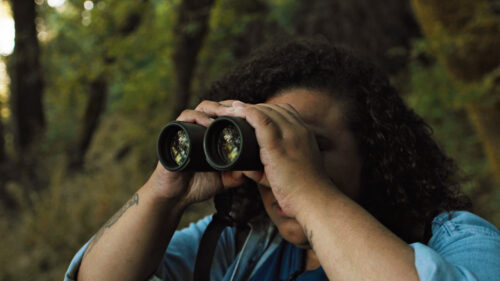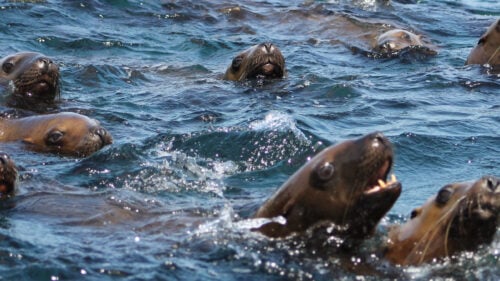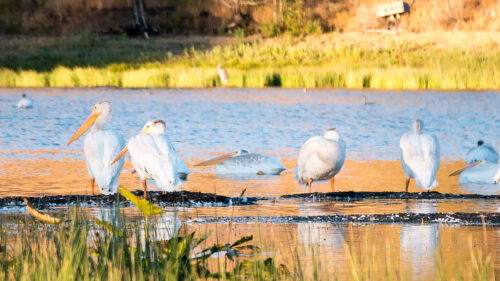For wildlife-lovers, the end of summer is a time to rejoice. The cooler weather means countless opportunities to admire Oregon’s fall and winter residents. You’ll find thousands of white snow geese foraging among farms along the Columbia River, raptors hunting near meadows in the Klamath Basin or tundra swans foraging in Eastern Oregon wetlands — and that’s just the beginning. Here are a few standout trails across the state to get you started.
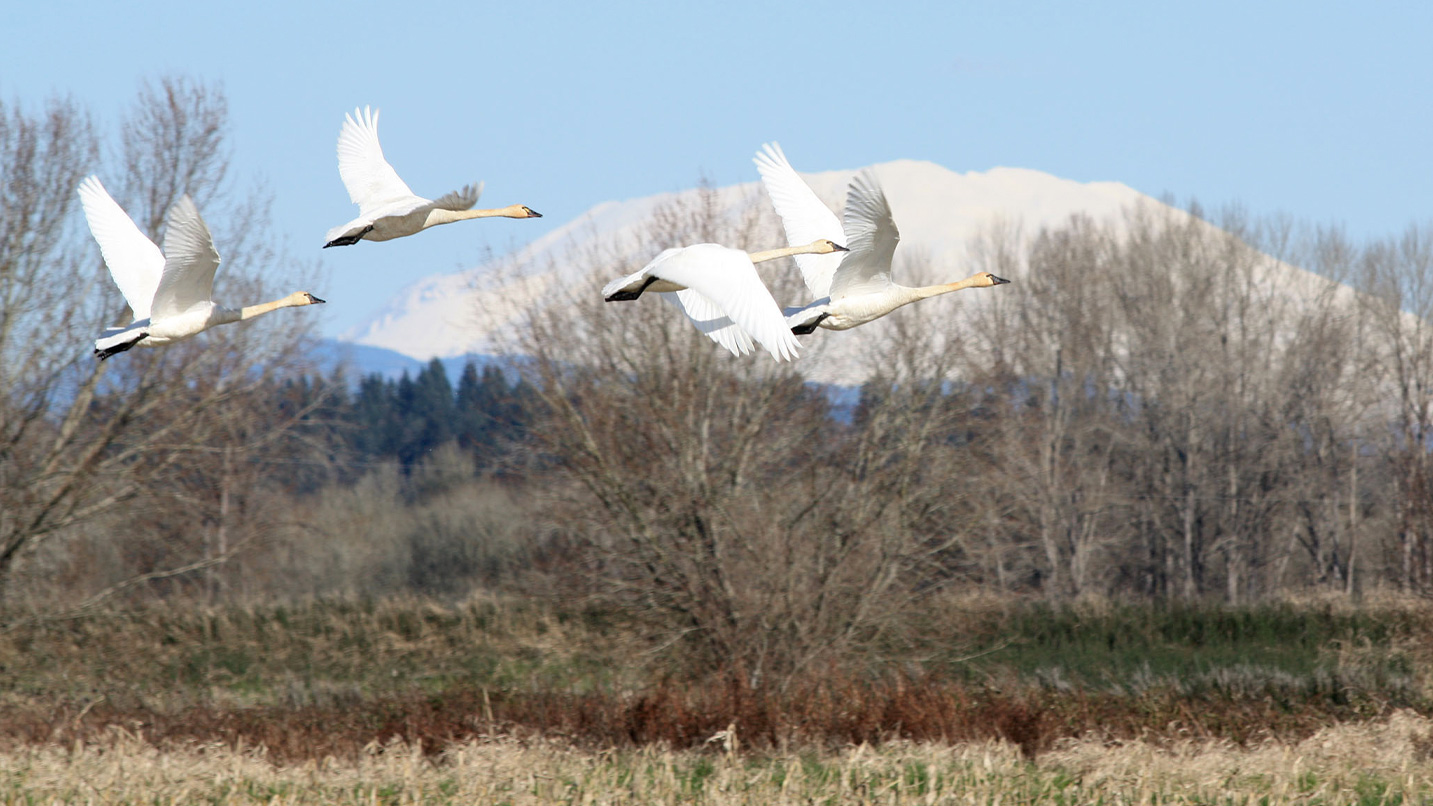
Waterfowl, Sparrows and Owls In and Around Portland
Sauvie Island Wildlife Area, 13 miles north of downtown Portland, offers some of the most accessible and rewarding fall birding. Several thousand snow geese and cackling geese, as well as hundreds of Sandhill cranes, winter along the lower Columbia River from late September until early May. The snow geese and cranes frequently move around the island foraging on farm fields, and if you keep your eyes on the sky, you’ll find the stunning flocks.
Walk or drive along the 1-mile gravel Rentenaar Road for a variety of sparrows, geese, cranes and ducks. Watch for waterfowl hunters as you go, and be sure to walk to the top of the levee for an expansive view of the Tualatin Mountains and canopies of Oregon white oaks. Around sunset you’ll likely catch hundreds of geese and cranes flying and calling as they prepare to roost at a nearby lake. Look for golden-crowned and white-throated sparrows in the thicket of blackberries that line the road and great horned owls perched on telephone poles at dusk.
For those who can’t make the trip outside the city, check out several great birding spots in Portland, including Whitaker Ponds Natural Area in the northeast part of town or Force Lake, a small pond packed with ducks in North Portland.
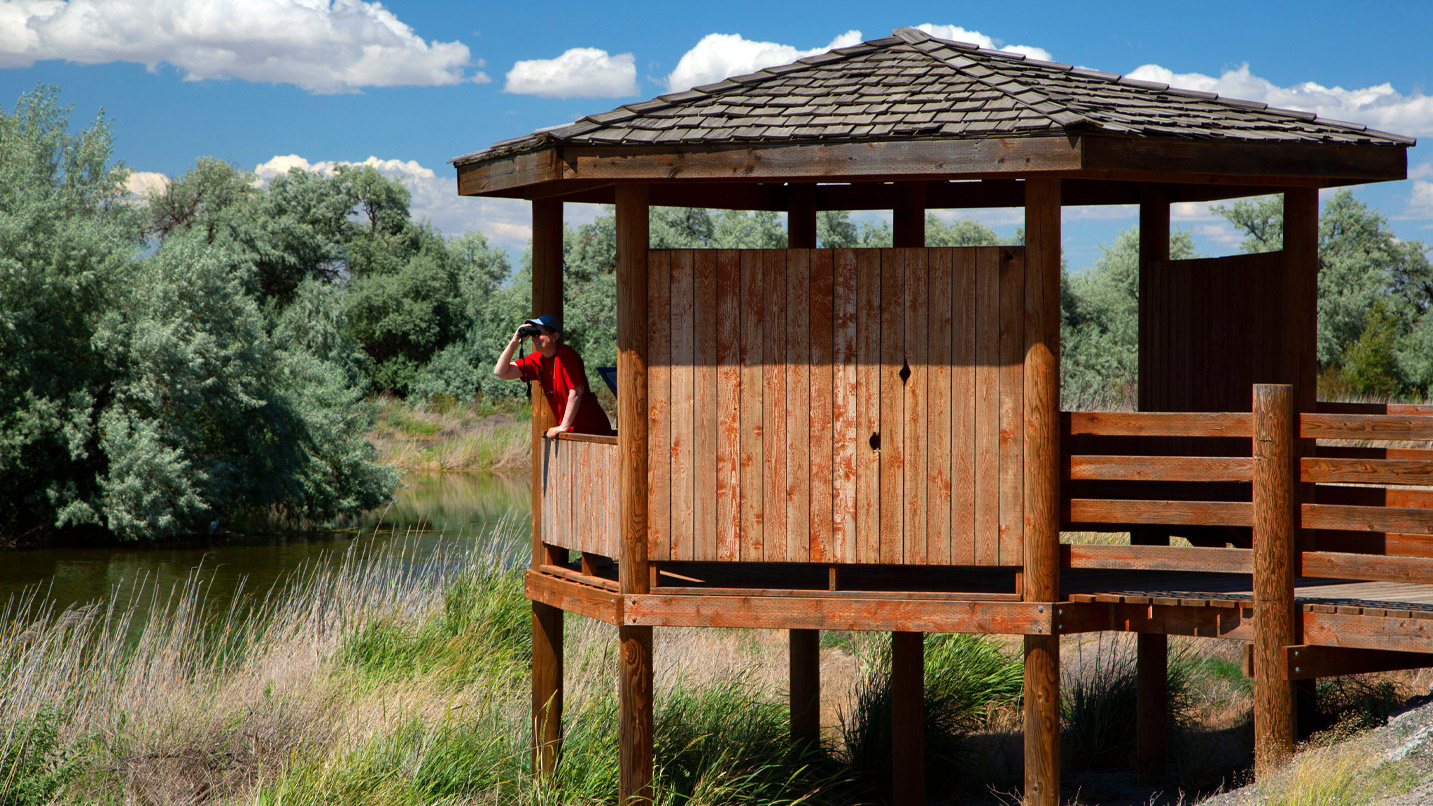
Flocks of Migrating Geese in Eastern Oregon
Farther upriver on the Columbia — roughly 14 miles northeast of Hermiston and 163 miles across the state on Interstate 84 from Portland — the Umatilla National Wildlife Refuge is a spectacle come fall and winter. The Eastern Oregon refuge was established in 1969 after construction of the John Day Dam, 75 miles downriver, flooded the Columbia River’s once abundant wetlands. Now the refuge provides critical wintering sites for thousands of migrating geese — about 12,700 snow geese and 2,500 Canada geese travel through each December. If you watch for long enough, you might see the geese suddenly take off together in a mass of white and black feathers and squawks.
In fall and winter, look for northern pintails with art deco-like plumage, ruddy ducks with distinct pale-blue bills and canvasbacks with striking auburn heads and white bodies. The graceful tundra swans are also common winter residents. An approximately 2-mile drive takes visitors throughout the refuge’s shrub-steppe (characterized by dry soil dotted by small shrubs like sagebrush) and wetland habitats. Several short hiking trails offer places to take in the scenery on foot, like the roughly quarter-mile McCormack Slough Trail. The refuge is popular with hunters, so contact the U.S. Fish and Wildlife Service to check the hunting schedule before visiting.
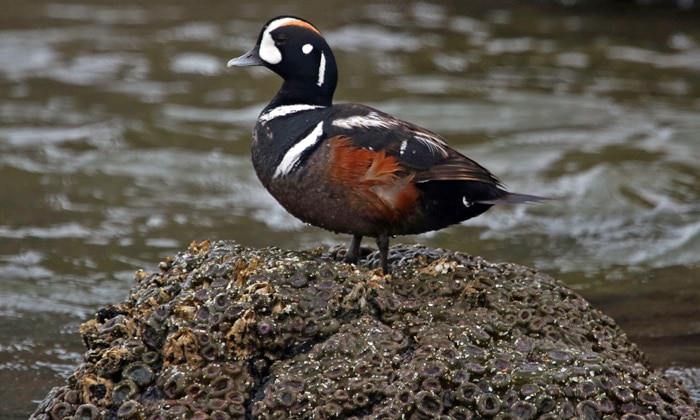
Diving Ducks and Peregrine Falcons on the Central Coast
The Oregon Coast offers excellent birding opportunities year-round, but come fall and winter, the estuaries and ponds are packed with loons, grebes, surf scoters and buffleheads. The aptly named Yaquina Head Outstanding Natural Area, 4 miles north of Newport, is stunning not just for the ocean views but also the wildlife.
Numerous short trails that total about 3.4 miles meander through the site. From the parking lot, wander up the Salal Hill Trail to the interpretive center to get a more expansive view, or walk down steep stairs to Cobble Beach. Look for harlequin ducks — known for their ornate plumage reminiscent of their namesake — foraging in the rough surf or resting on the rocks. You can spot black oystercatchers by their neon-orange bills and cream legs. Lucky bird-watchers might even catch a glimpse of a resident peregrine falcon.
Majestic Bald Eagles and Hawks in Southern Oregon
Those wanting more solitude should venture to one of Oregon’s premier birding sites: the Klamath Basin. There a series of six national wildlife Refuges protects one of the West’s most important wetland regions for migrating birds. The Klamath Basin is renowned for raptor viewing, with the highest concentration of wintering bald eagles in the lower 48.
Check out Klamath Marsh National Wildlife Refuge, about 55 miles north of Klamath Falls.
Stop along the gravel roads for views of the Williamson River and surrounding marshes, and linger with the birds that inhabit them. In the area’s agricultural lands, you may find rough-legged hawks, with black patches near the tips of their wings, and northern harriers, who hunt closer to the ground and have a distinct white stripe at the base of their bodies. Watch overhead for golden and bald eagles, as well as the tawny and white wings of the ferruginous hawk gliding against the soft winter sky.
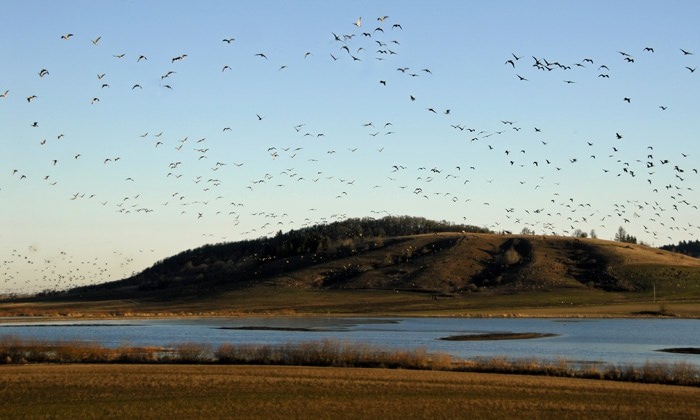
If You Go:
- Prepare for your trip by studying weather reports and learning the terrain of any remote areas.
- Bring paper maps in case of the lack of cell service, as well as your binoculars and warm and waterproof clothing. Be sure to wear bright colors during hunting season.
- A comprehensive field guide like the Handbook of Oregon Birds or Sibley FIeld Guide to Birds of Western North America is a must. You can also download a bird-watching app like eBird for reference.
- For more information, visit the Oregon Department of Fish and Wildlife bird-watching page.
